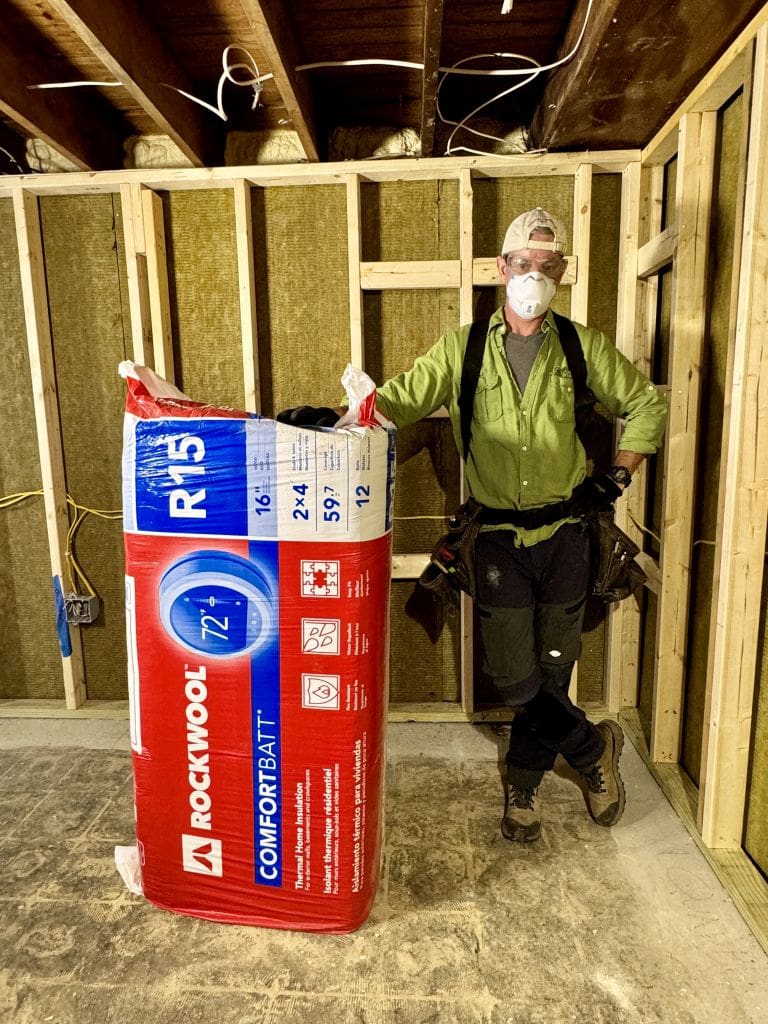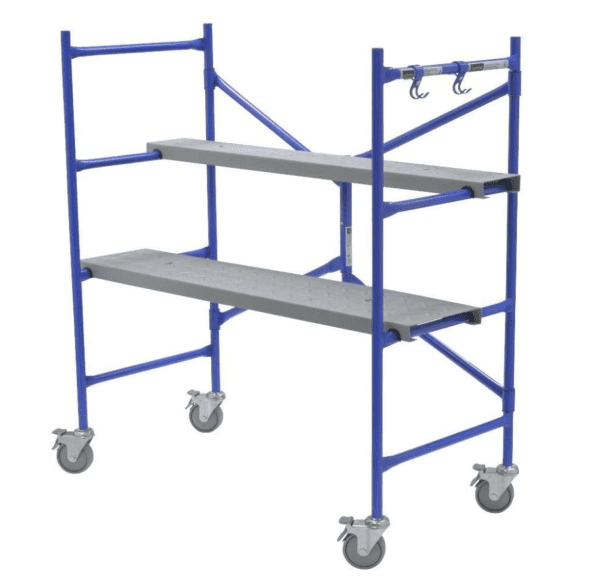
Whether you are insulating an unfinished basement or insulating your porch ceiling, it’s essential to start with the best insulation tools and materials in order to achieve the comfort you desire. Here’s a close look at some of those key materials and tools (like the best insulation knife, best work table for cutting insulation, and more!), and the reasons why we choose them again and again for our projects.
Essential Insulation Tools and Materials
- Ready-made and easy-to-store sawhorses
- Ball Cap, Long Sleeve Shirt, Gloves
Best Insulation
We like ROCKWOOL ComfortBatt for our work. While it is dusty, it is nowhere near as dusty as other types of insulation we’ve used. It cuts easily and is friction-fit between framing members.
In addition, it can be cut into different lengths and widths as needed and there’s almost no waste. Can even be used as fire blocking in some areas.
Best Insulation Tools & Materials
Cut Table
First, please don’t cut on the floor. You don’t have time for how big a waste of time and effort it is. We typically make our own cut table, but we often need a few. For insulation installation, I use rolling / locking casters and wheel it around the room with me. I leave several voids in the table top so I can plunge the insulation knife straight through.
Then I get a cleaner, faster, easier cut that way. If you don’t want to make one, you could get a similar effect using sawhorse and a sheet of plywood. I usually run 3 wood studs under the plywood to stiffen it up.
NOTE: These are great ready-made sawhorses, but we also use these DIY sawhorses.
You could also use something like the very handy Disston OmniTable Plus, though the surface is going to get dinged up by the insulation knife.
Insulation Knife
Technically, this insulation knife is pretty similar in serration to a bread knife you could just pull out of the knife block in your kitchen, however, the added handle geometry on this one keeps your knuckles off the cutting surface. It’s the best insulation knife.

Ladders and Scaffold
You may also need ladders or a step stool, depending on the application. For larger projects like a finished basement, a rolling scaffold may do the trick. We often use a combination of ladders and rolling scaffold on larger projects because there is more than one of us working.
Best Insulation Gear
Dust Mask
You could go the whole respirator route, but I don’t think that is required. Yes, there is particulate matter and you’ll definitely start sniffling at some point without a dust mask, but all-in-all, it is very low dust. In addition, wear a ball cap, long sleeve shirt, and gloves to protect your skin and hair. Always keep the particulate out of your hair, and off your skin.
Eye Protection
Lots of little particles become airborne when installing insulation, especially if you’re installing it overhead. We insulate all our porch ceilings, for example, to mitigate the heat island effect of the sun pounding the shingles above. I like the kind of eye protection that I’m minimally aware of and of the many sets I’ve work, 3M’s 400 Series is my favorite.
I’ve also worn a face shield to keep my whole face covered. A face shield is great for other activities, too, like angle grinding.



